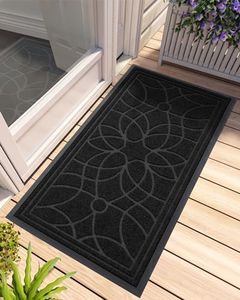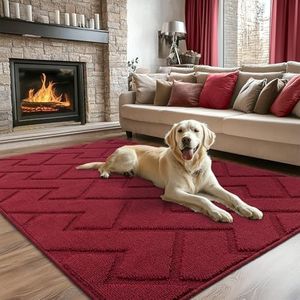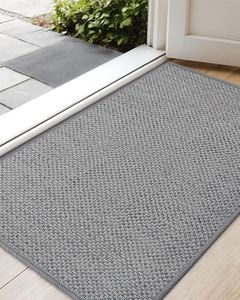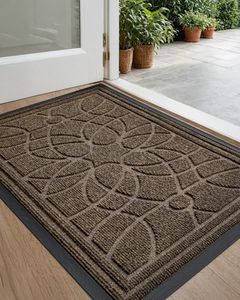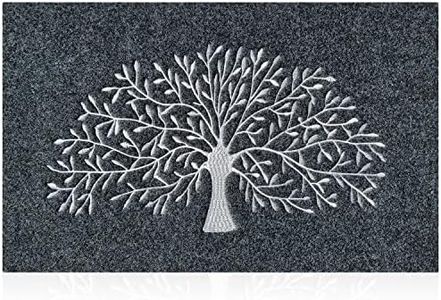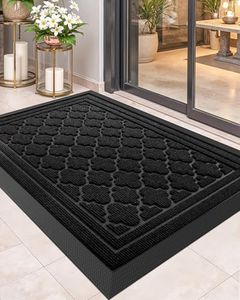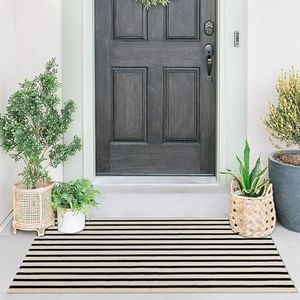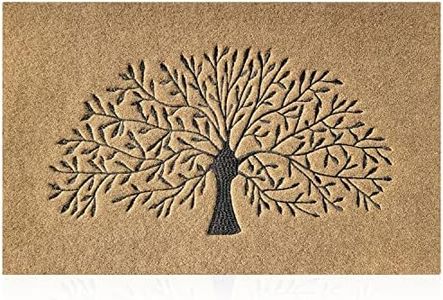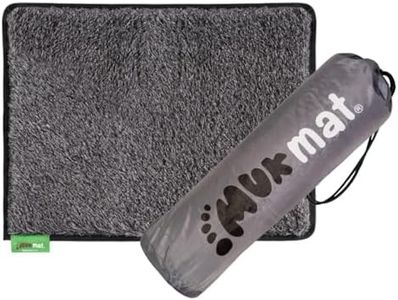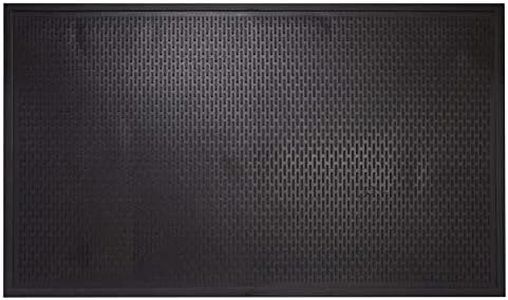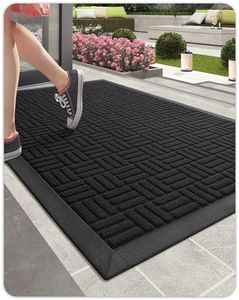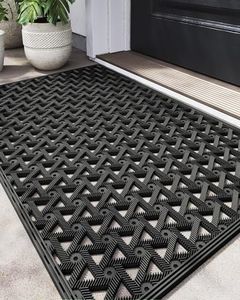We Use CookiesWe use cookies to enhance the security, performance,
functionality and for analytical and promotional activities. By continuing to browse this site you
are agreeing to our privacy policy
10 Best Outdoor Doormats
From leading brands and best sellers available on the web.Buying Guide for the Best Outdoor Doormats
Choosing the right outdoor doormat is about finding a mat that keeps dirt, mud, and moisture from entering your home, stands up well to outdoor weather, and complements the space outside your door. The best doormat for you depends on where you’ll place it (covered porch, open area, etc.), how much foot traffic you expect, and your preference for look and ease of cleaning.MaterialMaterial refers to what the doormat is made from, and it's important because it affects durability, cleaning ease, and how well the mat scrapes dirt or absorbs moisture. Common materials are rubber, coir (natural coconut fibers), synthetic fibers, and recycled materials. Rubber and synthetic mats are tough and waterproof, ideal for rainy climates and high-traffic spots; coir mats are great for scraping off dirt but aren't as suitable in heavy rain since they can get soggy; recycled materials often blend durability with eco-friendliness. Choose a material by considering your climate, exposure to elements, and how much mud or water is likely to be tracked in.
SizeSize is simply the length and width of the doormat. This matters because you want enough surface area for people to wipe their shoes but not so much that it looks awkward at your door or gets in the way. Small mats fit apartment doors and tight entries, medium sizes work for typical front doors, and large mats suit wide doors, double entries, or high-traffic areas. Measure your entryway and pick a mat that covers most of the door’s width without blocking it or making it hard to open the door.
Pile Height/ThicknessPile height or thickness describes how deep or raised the doormat fibers or surface is. This is important for cleaning performance, door clearance, and safety. Thin mats (under 0.5 inches) fit well under doors that swing close to the ground; medium mats (0.5-1 inch) are good for average use and balance cleaning power with fit; thick mats (over 1 inch) trap more debris and water but may interfere with low doors. Check how close your door sits to the floor and decide whether you need something thin enough to avoid door jams or thick enough for lots of mud and moisture.
Backing/GripBacking or grip refers to the material and design on the bottom of the doormat, which keeps it in place. This spec is crucial for preventing slips and ensuring the mat doesn't shift when stepped on. Backings can be rubber (offering great grip and waterproofing), non-slip plastics, or sometimes plain fiber (less grip, mainly for covered areas). Choose a mat with a strong grip if your entryway is smooth or frequently wet, or if you have kids or elderly people who might slip.
Cleaning and MaintenanceThis spec explains how easy it is to clean the mat. Some mats can be shaken out, hosed off, or even machine-washed, while others may require more effort to keep clean. Mats that resist staining and dry quickly are easier to maintain. Consider how much dirt and moisture you anticipate and pick a mat you’re willing to clean as often as needed—hose-washable mats are practical for muddy, rainy areas, while simple shake-out mats may be enough for drier climates.
Weather ResistanceWeather resistance describes how well the doormat resists fading, mold, mildew, and breakdown from rain, sun, and temperature swings. It’s important because a mat exposed to the elements needs to last without degrading. Mats labeled as UV-resistant or all-weather are best for uncovered areas that get direct sun and rain; mats for covered porches need only basic water-resistance. Match this spec to how exposed your doorway is to weather.
